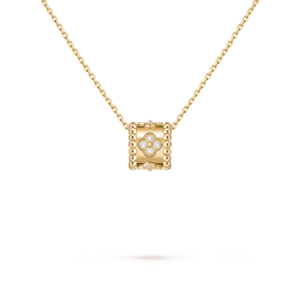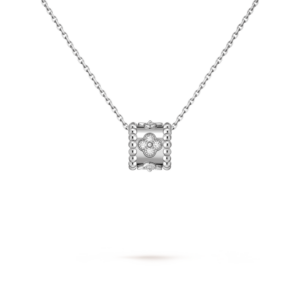The art of enamel
November 18, 2024
Van Cleef & Arpels pays tribute to time-honored enameling techniques in its watch collections. Silica powder and pigments are kissed by the flame of the kiln to produce enamel, a veritable art of fire. A consummate series of steps bring enameled motifs to life, imbuing pieces with intense hues and profound brilliance.
Plique-à-jour enamel
Plique-à-jour enamel plays on light and transparency with crystalline clarity, reminiscent of stained glass. Motifs are designed with an openwork structure which is then filled with thin coats of translucent enamel, fired after each layer to bring out the full intensity of the colors.
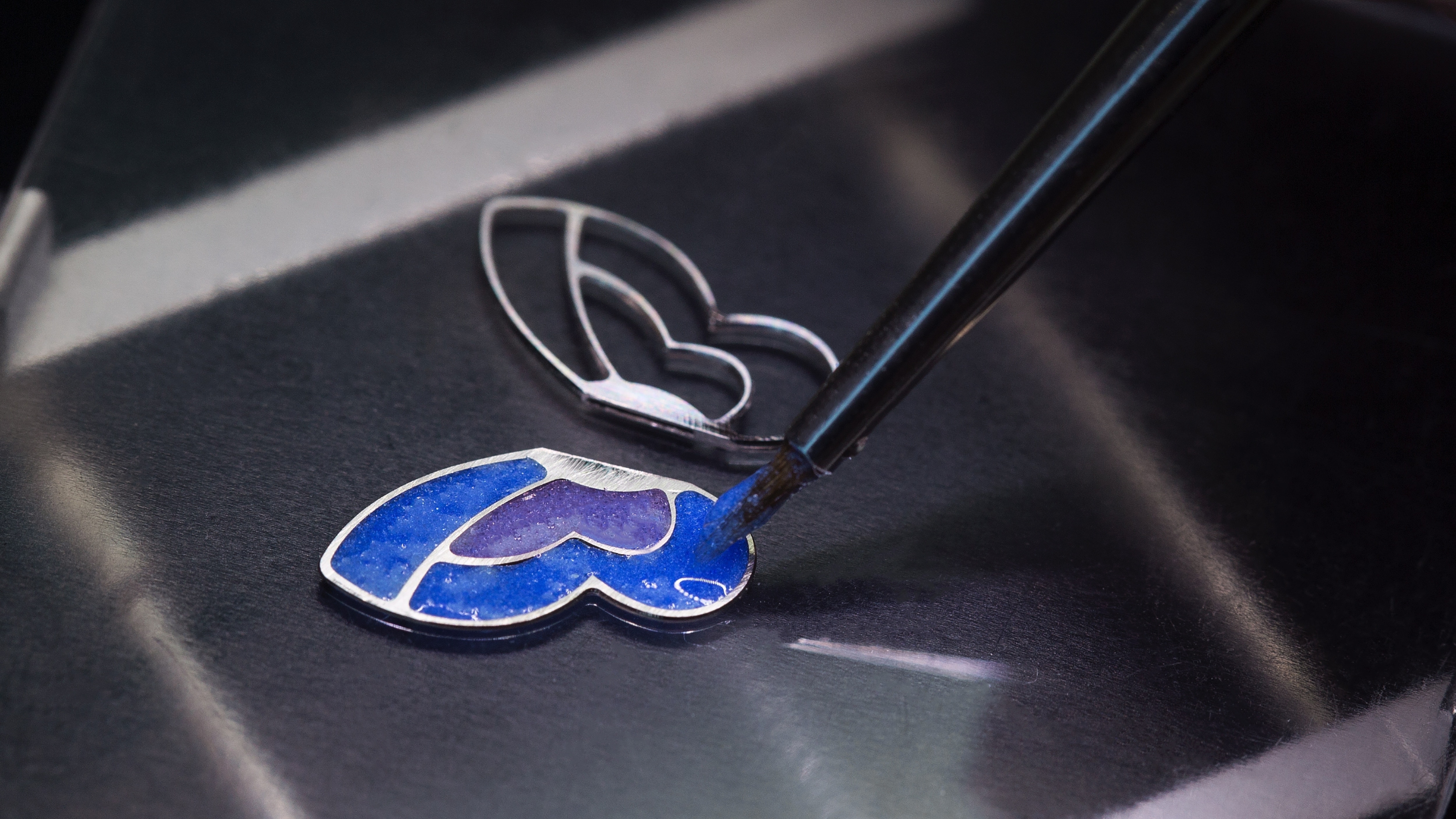
Application of plique-à-jour enamel on the butterfly’s wings, Lady Arpels Papillon Automate watch
Grisaille enamel
A technique developed in Limoges in the 16th century, grisaille enamel is unique for the chiaroscuro effects it creates through the interplay of two colors of enamel. The metallic mount is first blanketed with a coat of black or blue enamel, after which a white paint known as “Blanc de Limoges” is applied in varying thickness to play on transparency. The resulting two-tone effect imparts a sense of depth and mystery to the dial. The Maison also uses this technique with colored enamels to create backgrounds characterized by delicate pastel nuances.

Application of the first layer of enamel on the dial, Lady Arpels Pont des Amoureux watch
Champlevé enamel
Prior to enameling, hollows are cut into a metallic base outlining the desired motif. Moist powdered enamel is then placed in these indentations and the piece is fired. The process is repeated several times, after which excess enamel is removed with a final sanding. This full design thus takes shape, dazzlingly defined by threadlike precious metal contours.
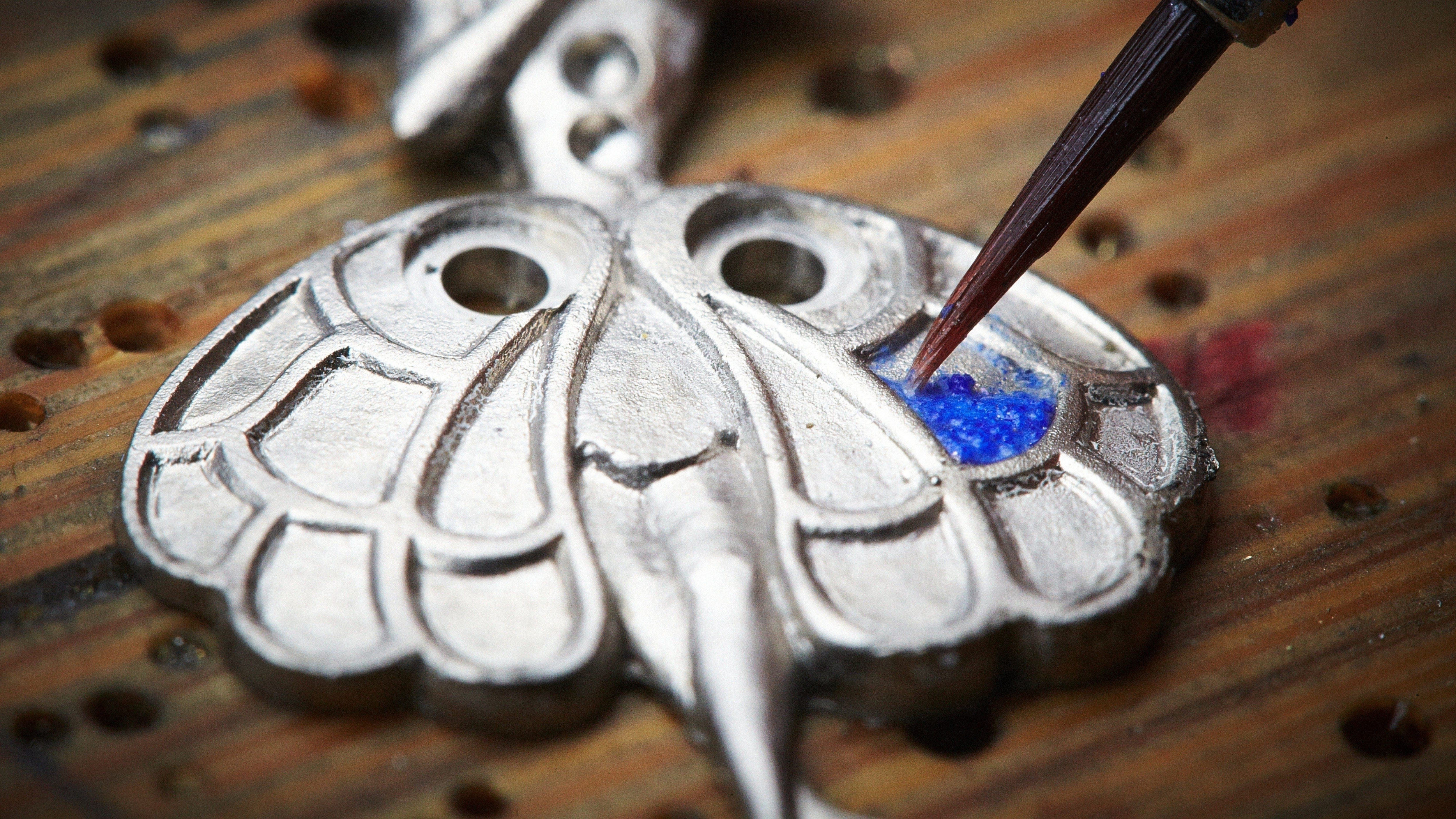
Application of champlevé enamel, Lady Arpels Ballerine Enchantée watch
Vallonné enamel
A variation on the previous technique, vallonné enameling consists of creating hill-like reliefs within the indentations cut into the base. This approach adds depth and subtle nuances of color to the decor, enhancing the dial with a sense of movement and vitality.
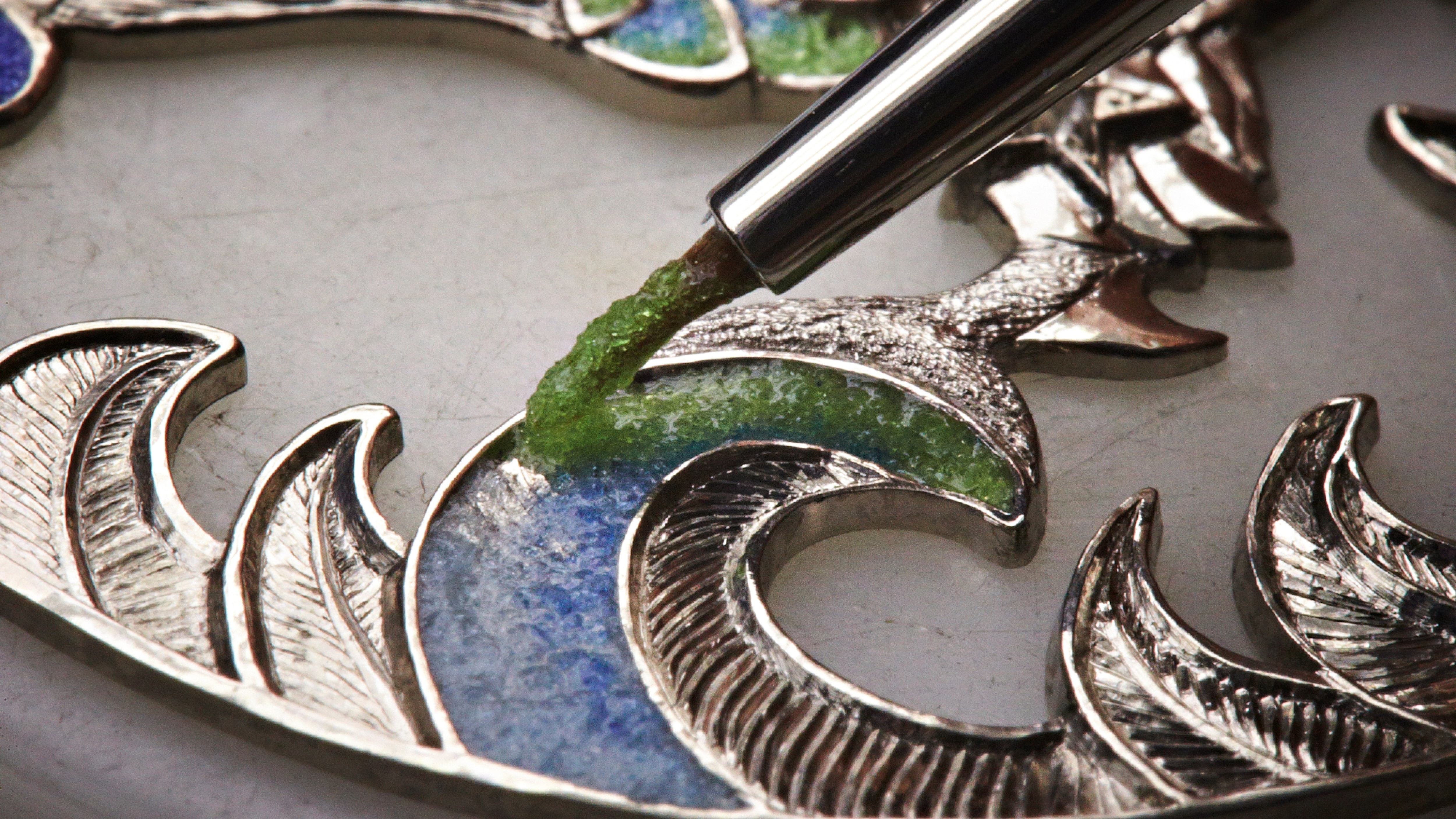
Application of valloné enamel, Midnight Constellation Gallus watch
Cabochonné enamel
The cabochonné enamel technique entails the application of several thick coats to produce a rounded surface. This process leads to a pronounced effect of volume on the dial.
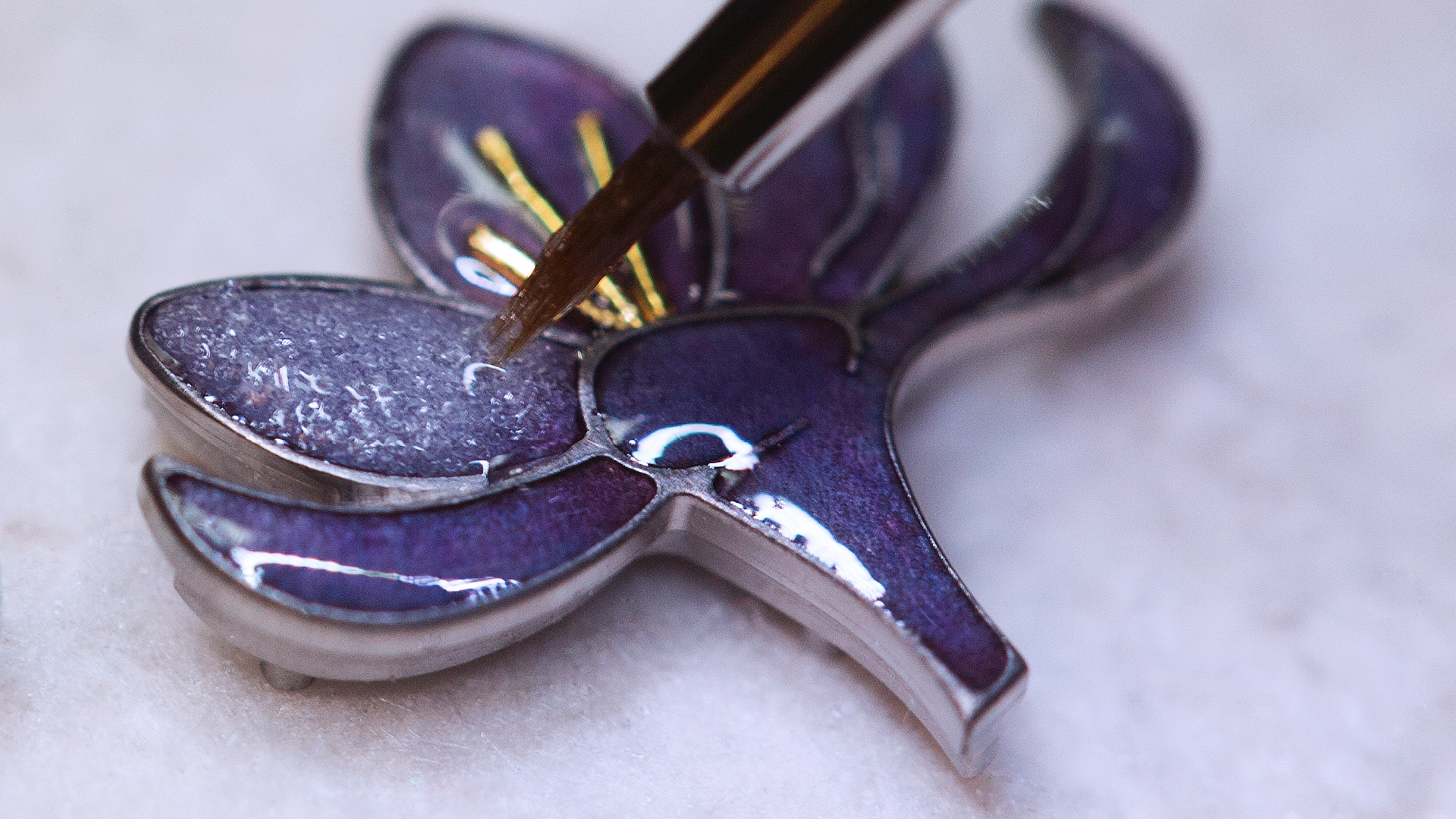
Application of cabochonné enamel, Charms Extraordinaise Désir watch
Paillonné enamel
The paillonné enamel technique consists of positioning a piece of foil, known as a “paillon,” between two coats of enamel, giving the dial a transparent luminosity.
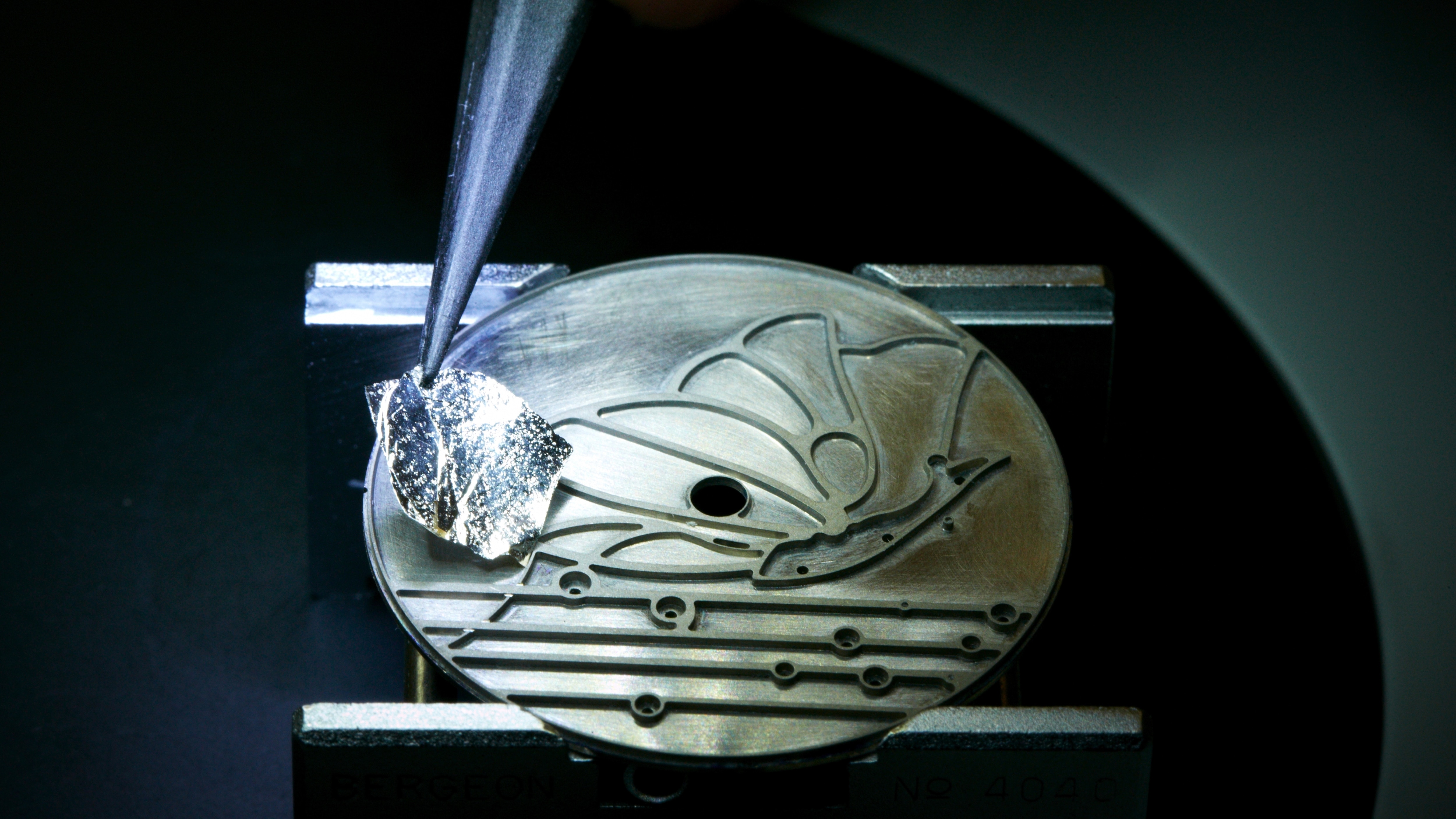
Application of plique-à-jour enamel, Lady Arpels Papillon Bleu Nuit watch
